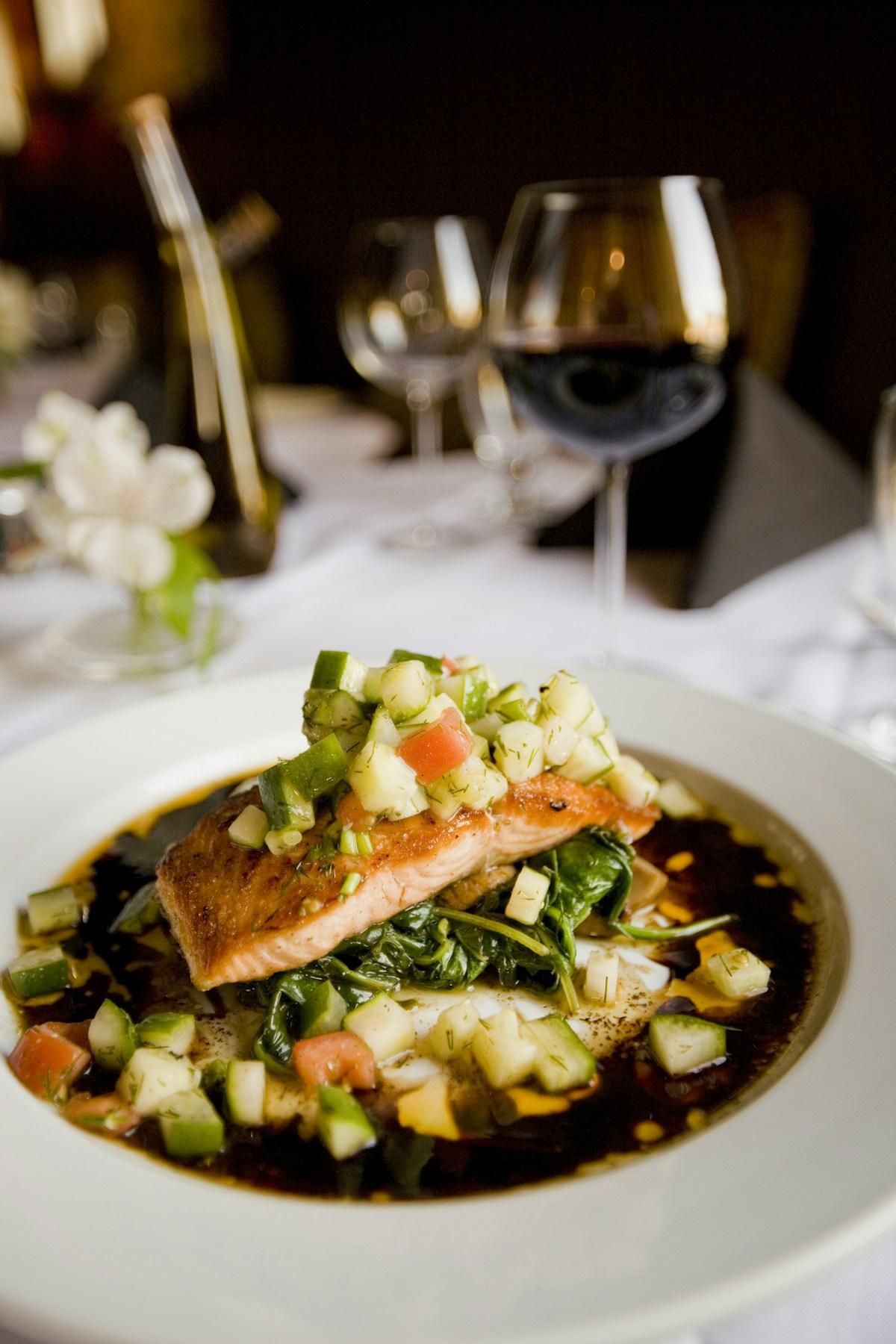
Portion Control Made Easy: Visual Guides to Right-Sizing Your Meals Without Measuring
Master portion control without measuring cups or scales. Learn simple hand methods, plate techniques, and visual guides to manage serving sizes for better weight management and mindful eating.
Verdu Team
The team behind Verdu, your AI-powered nutrition companion
Have you ever looked at a restaurant plate and wondered, "Is this one serving... or three?" You're not alone. Over the past few decades, our sense of "normal" portion sizes has become seriously distorted—and it's affecting our waistlines, our health, and our relationship with food.
The good news? You don't need measuring cups, food scales, or a nutrition degree to master portion control. In this guide, you'll discover simple visual methods that help you right-size your meals using tools you always have with you: your hands, your plate, and everyday objects.
Let's take back control of your portions—without the obsessive measuring.
The Portion Distortion Problem
Here's a startling fact: according to the National Heart, Lung, and Blood Institute (NHLBI), portion sizes in America have nearly doubled over the past 20 years. This phenomenon, known as "portion distortion," has fundamentally changed how we perceive normal serving sizes.
Consider these shocking statistics from NIH research:
- A typical muffin is now 333% larger than the USDA-recommended serving size
- Pasta servings are 480% larger than standard recommendations
- Restaurant portions are 2-3 times larger than what nutrition experts recommend
This isn't just about aesthetics. When portion sizes increase, so do our calorie intakes—often without us even realizing it. Studies show that when people are served larger portions, they consistently eat more, consuming 20-30% more calories without feeling any fuller.
The result? Weight gain, increased risk of chronic diseases, and a completely warped understanding of what a "normal" amount of food looks like.
Portion Size vs. Serving Size: What's the Difference?
Before we dive into visual guides, let's clear up some confusion.
Portion size = The amount of food you choose to eat at one time (could be more or less than recommended)
Serving size = The standardized amount recommended by nutrition guidelines or listed on food labels
Here's the problem: Portions and servings rarely match. You might pour yourself a bowl of cereal thinking it's "one serving," when in reality, you've poured three servings without realizing it.
Understanding this distinction is the first step toward better portion control and more mindful eating habits.
The Hand Method: Your Built-In Portion Guide
Your hands are perfectly portable, personalized measuring tools. Since hand size generally correlates with body size, this method provides surprisingly accurate portion estimates—no kitchen scale required.

The Hand Guide to Portions
According to the CDC's diabetes meal planning guidelines, you can use your hands to estimate portions with remarkable accuracy. Here's how:
Palm = Protein (3-4 ounces)
Your palm (not including fingers) represents a proper portion of meat, poultry, fish, or tofu—roughly 3-4 ounces. This applies to:
- Chicken breast
- Salmon fillet
- Lean beef
- Pork tenderloin
- Tempeh or firm tofu
Aim for one palm-sized portion per meal.
Fist = Carbohydrates & Grains (1 cup)
Your clenched fist equals approximately one cup of carbohydrate-rich foods:
- Cooked rice or quinoa
- Pasta
- Potatoes or sweet potatoes
- Oatmeal
- Beans or lentils
Most meals should include 1-2 fist-sized portions of quality carbs.
Thumb = Fats (1-2 tablespoons)
The tip of your thumb (from the knuckle up) represents about one tablespoon of fat:
- Peanut or almond butter
- Olive oil or cooking oils
- Butter
- Mayonnaise
- Nuts (a small handful)
Limit fat portions to 1-2 thumb-sized servings per meal, since fats are calorie-dense.
Cupped Hand = Fruits & Snacks (1/2 to 1 cup)
Your cupped hand holds about 1/2 to 1 cup of fruits, berries, or snack foods:
- Fresh berries
- Chopped fruit
- Dried fruit
- Nuts or seeds
- Chips or crackers
Perfect for portioning snacks and preventing mindless munching.
Two Hands = Vegetables (as much as you want)
When you cup both hands together, that's your minimum for non-starchy vegetables:
- Leafy greens
- Broccoli, cauliflower, Brussels sprouts
- Peppers, carrots, cucumber
- Tomatoes, zucchini, asparagus
The beauty of vegetables? You can exceed this portion guilt-free.
The hand method is excellent for on-the-go situations, but what about when you're plating a meal at home?
The Plate Method: Visual Balance Without Measuring
The Harvard Healthy Eating Plate offers one of the most effective visual guides for balanced, well-portioned meals. Think of your plate as a pie chart divided into sections.
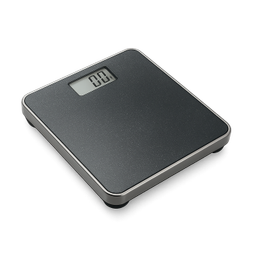
The Harvard Healthy Eating Plate Formula
Research from Harvard's Nutrition Source demonstrates that this simple visual method helps people naturally control portions while ensuring balanced nutrition.
The Plate Breakdown
1/2 of your plate = Vegetables and Fruits (mostly vegetables)
Fill half your plate with colorful, non-starchy vegetables and fruits. Think:
- Leafy greens, broccoli, peppers, carrots
- Tomatoes, cucumbers, green beans
- Berries, apples, citrus (in smaller amounts)
1/4 of your plate = Whole Grains and Healthy Carbs
One quarter should contain whole grains or starchy vegetables:
- Brown rice, quinoa, farro
- Whole wheat pasta
- Sweet potatoes
- Whole grain bread
1/4 of your plate = Lean Protein
The remaining quarter is for protein sources:
- Fish, poultry, lean meats
- Beans, lentils, chickpeas
- Tofu, tempeh
- Eggs
Plus: Healthy Fats in Moderation
Add a small amount of healthy fats:
- Olive oil for cooking
- Avocado slices
- Nuts or seeds as garnish
- A drizzle of vinaigrette
Why the Plate Method Works
This approach naturally controls portions because you're dividing your plate into predetermined sections. It also ensures you're getting a balance of macronutrients (protein, carbs, fats) and plenty of fiber-rich vegetables.
Pro tip: Use a 9-inch dinner plate instead of a 12-inch plate. Research shows that larger plates make portions look smaller, leading us to serve ourselves more food. A smaller plate creates the visual illusion of a fuller plate with less food.
Everyday Object Comparisons for Tricky Foods
Some foods don't fit neatly into the hand or plate method. That's where everyday object comparisons come in handy.
Common Portion Comparisons
- 3 oz protein = Deck of cards or bar of soap
- 1 cup vegetables or fruit = Baseball or your fist
- 1/2 cup cooked grains = Hockey puck or rounded handful
- 1 oz cheese = Four stacked dice or your index and middle finger
- 2 tablespoons peanut butter = Golf ball or ping pong ball
- 1 teaspoon butter or oil = One die or the tip of your thumb
- Medium baked potato = Computer mouse
- 1 oz nuts = Small handful (about 1/4 cup)
- 3 oz fish = Checkbook
These visual cues make it easier to estimate portions when you're dining out, at a party, or simply eyeballing your meals at home.
Mindful Eating: The Missing Piece of Portion Control
Visual guides are powerful tools, but they work best when paired with mindful eating—the practice of paying attention to your food, eating slowly, and tuning into your body's hunger and fullness signals.
Research from Harvard Health found that participants who practiced mindful eating in a three-month program lost an average of 9 pounds—without strict dieting or calorie counting. They simply learned to listen to their bodies and eat with awareness.
Mindful Eating Strategies for Better Portion Control
1. Eat Without Distractions
Put away your phone, turn off the TV, and focus on your food. When you're distracted, you're more likely to overeat because you're not paying attention to fullness cues.
2. Slow Down (Aim for 20+ Minutes Per Meal)
It takes about 20 minutes for your stomach to signal your brain that you're full. Eating slowly gives your body time to register satiety, preventing overeating.
3. Use Smaller Plates and Bowls
Studies consistently show that people eat less when they use smaller dishware. A smaller plate makes your portion look more substantial, satisfying both your eyes and your stomach.
4. Serve Food on Plates, Not from Packages
Eating straight from a bag of chips or a pint of ice cream is a recipe for mindless overconsumption. Always portion snacks onto a plate or bowl so you can see exactly how much you're eating.
5. Check In with Your Hunger
Before reaching for seconds, pause for 5-10 minutes. Ask yourself: "Am I still hungry, or am I eating out of habit, boredom, or because the food is there?"
Wondering how much you're really eating throughout the day? Verdu's AI-powered meal scanning analyzes your portions visually, giving you instant feedback on your serving sizes—no measuring required. Just snap a photo of your plate, and Verdu shows you how your portions stack up against your goals.
Navigating Restaurant Portions: Dining Out Without Overeating
Restaurant meals are notorious for oversized portions. A single entrée at a chain restaurant can easily contain 1,500-2,000 calories—more than most people need for an entire day.
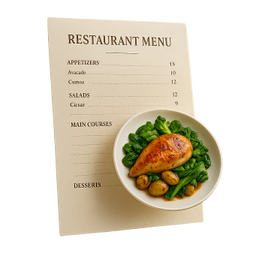
Smart Strategies for Restaurant Eating
Dining out doesn't have to derail your portion control efforts. With these strategies, you can enjoy restaurant meals while keeping serving sizes in check.
Restaurant Portion Control Tips
1. Split an Entrée or Order an Appetizer as Your Main
Most restaurant entrées are large enough for two people. Share with a dining companion, or order a protein-rich appetizer (like grilled shrimp or salmon) as your main course.
2. Ask for a To-Go Box Immediately
Before you start eating, box up half of your meal to take home. This prevents the temptation to keep eating just because the food is in front of you.
3. Use the Plate Method (Even at Restaurants)
Mentally divide your plate: half vegetables, quarter protein, quarter carbs. If your plate doesn't match this ratio, adjust what you eat accordingly—or ask for extra vegetables.
4. Order Sauces and Dressings on the Side
Restaurant sauces and dressings can add hundreds of hidden calories. Order them on the side and use the "fork dip" method: dip your fork in the dressing, then spear your salad. You'll use far less.
5. Skip the Bread Basket (or Take One Piece)
Those free breadsticks or chips can easily add 300-500 calories before your meal even arrives. Politely ask your server to remove them, or take one piece and move the basket out of reach.
Trying to make smart choices when dining out? Verdu's Menu Picker feature analyzes restaurant menus and recommends well-portioned, balanced meals that align with your nutrition goals—whether you're at a steakhouse, Italian restaurant, or vegan café.
Common Portion Control Mistakes (And How to Avoid Them)
Even with the best intentions, it's easy to fall into portion control traps. Here are the most common mistakes and how to fix them.
Mistake #1: Not Accounting for Calorie-Dense Foods
Foods like nuts, nut butters, oils, cheese, and avocados are incredibly healthy—but also calorie-dense. A small handful of almonds (1 oz) packs about 160 calories, and it's easy to mindlessly eat three or four times that amount.
Fix: Pre-portion these foods. Measure out one serving, put it in a small bowl, and put the container away.
Mistake #2: Pouring Cereal, Snacks, or Drinks Directly from the Container
When you pour cereal straight from the box or snack from a large bag, you're almost guaranteed to overeat.
Fix: Use measuring cups once or twice to "calibrate" your eye, then always pour snacks and cereal into a bowl. For drinks, stick to standard glass sizes (8 oz for juice, 12 oz for other beverages).
Mistake #3: Skipping Meals, Then Overeating Later
When you skip breakfast or lunch, you arrive at your next meal ravenous—and you're far more likely to overeat and make poor food choices.
Fix: Eat balanced meals every 3-5 hours to maintain stable blood sugar and prevent extreme hunger.
Mistake #4: Using Oversized Plates, Bowls, and Glasses
Larger dishware leads to larger portions. It's a psychological trick called the Delboeuf illusion: the same amount of food looks smaller on a big plate.
Fix: Downsize your dishware. Use 9-inch dinner plates, smaller bowls for snacks and cereal, and tall, narrow glasses for beverages.
Quick Portion Control Hacks for Busy Lives
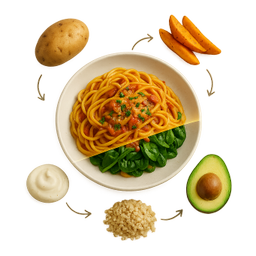
Time-Saving Portion Strategies
You don't need to spend hours measuring and weighing food. These quick hacks make portion control nearly effortless.
10 Effortless Portion Control Hacks
-
Pre-portion snacks on Sunday. Divide nuts, crackers, fruit, and veggies into single-serving containers for grab-and-go convenience.
-
Use measuring cups once to "train your eye." Measure out one serving of rice, pasta, cereal, and other staples. Notice what it looks like in your bowl. From then on, eyeball it.
-
Fill half your plate with vegetables first. This crowds out higher-calorie foods and ensures you get plenty of fiber and nutrients.
-
Drink a glass of water before meals. This helps with satiety and prevents eating when you're actually just thirsty.
-
Use the "hand test" before going back for seconds. Wait 10 minutes, drink water, and check if you're still hungry.
-
Buy single-serving packages for trigger foods. If you can't control yourself around ice cream or chips, buy individual portions instead of family-size containers.
-
Eat protein and vegetables first. When you start with the most nutritious foods, you're more likely to feel satisfied before overeating carbs or fats.
-
Use taller, narrower glasses. Research shows people pour less liquid into tall glasses than short, wide ones.
-
Keep serving dishes off the table. When food is within arm's reach, you're more likely to take seconds without thinking.
-
Chew thoroughly (20-30 times per bite). This slows you down and enhances the eating experience, making you feel more satisfied with less food.
A Day of Well-Portioned Meals: Practical Examples
Let's put it all together with real-world examples of what balanced, well-portioned meals look like throughout the day.
Breakfast (400-500 calories)
Greek Yogurt Parfait
- 1 cup plain Greek yogurt (fist-sized portion)
- 1/2 cup mixed berries (cupped hand)
- 2 tablespoons granola (small handful)
- 1 tablespoon almond butter (thumb-sized portion)
Visual check: Your bowl should be mostly yogurt and berries, with a light sprinkle of granola and a small dollop of almond butter.
Lunch (500-600 calories)
Grilled Chicken Salad
- 2-3 cups mixed greens and vegetables (two cupped hands)
- 3-4 oz grilled chicken breast (palm-sized)
- 1/2 cup quinoa (fist-sized)
- 1 oz feta cheese (two dice)
- 2 tablespoons vinaigrette (thumb-sized pour)
Visual check: Your plate should be overflowing with colorful vegetables, with chicken and quinoa taking up about 1/3 of the plate combined.
Snack (150-200 calories)
Apple with Almond Butter
- 1 medium apple (fist-sized)
- 1 tablespoon almond butter (thumb-sized)
Hummus and Veggies
- 1/4 cup hummus (golf ball)
- 1 cup sliced peppers, carrots, cucumbers (fist-sized)
Dinner (600-700 calories)
Salmon with Roasted Vegetables and Sweet Potato
- 4 oz baked salmon (palm-sized)
- 1 medium sweet potato (computer mouse-sized)
- 1.5-2 cups roasted broccoli, Brussels sprouts, and carrots (two cupped hands)
- 1 teaspoon olive oil for roasting (fingertip)
Visual check using the plate method:
- Half the plate: roasted vegetables
- One quarter: sweet potato
- One quarter: salmon
This day totals approximately 1,650-2,000 calories—appropriate for most adults seeking weight maintenance or gradual, healthy weight loss.
Your Portion Control Action Plan
Ready to take control of your portions without obsessive measuring? Here's your simple action plan:
Week 1: Learn the Hand Method
Practice using your hands to estimate portions at every meal. It will feel awkward at first, but within a week, it becomes second nature.
Week 2: Master the Plate Method
Start visually dividing your plate into sections: half vegetables, quarter protein, quarter carbs. Take a photo of your meals to see if you're hitting the right balance.
Week 3: Implement Mindful Eating
Slow down, eliminate distractions, and pay attention to your body's hunger and fullness signals. Notice when you're eating out of habit versus genuine hunger.
Week 4: Refine and Adjust
By now, you should have a solid grasp of visual portion control. Fine-tune your approach based on what works for your lifestyle, preferences, and goals.
The Bottom Line
Portion control doesn't require obsessive measuring, calorie counting, or deprivation. With simple visual guides—your hands, your plate, everyday objects—you can right-size your meals, improve your relationship with food, and support your health and weight management goals.
Key Takeaways:
- Use the hand method: palm = protein, fist = carbs, thumb = fats, two hands = vegetables
- Follow the plate method: 1/2 vegetables, 1/4 protein, 1/4 whole grains
- Practice mindful eating: slow down, eliminate distractions, listen to your body
- Beware of portion distortion, especially when dining out
- Use smaller plates and pre-portion snacks to prevent overeating
The beauty of visual portion control is its simplicity and flexibility. You don't need special tools, apps, or complicated calculations—just a little awareness and practice.
That said, if you want instant visual feedback on your portions and personalized insights into your eating patterns, modern technology can help. Verdu's AI-powered meal scanning analyzes your plate in seconds, showing you exactly how your portions align with your goals—no measuring cups, no manual logging, just snap and learn.
Start Building Better Portion Habits Today
Stop guessing about your serving sizes. With Verdu's visual meal analysis and personalized nutrition insights, you'll know exactly what's on your plate—and what you should eat next.
Download Verdu and take the guesswork out of portion control:
Want to learn more about balanced nutrition? Check out our guides on Understanding Macronutrients, Mindful Eating and Meal Timing, and High-Protein Foods for Active Lifestyles.
Related Articles
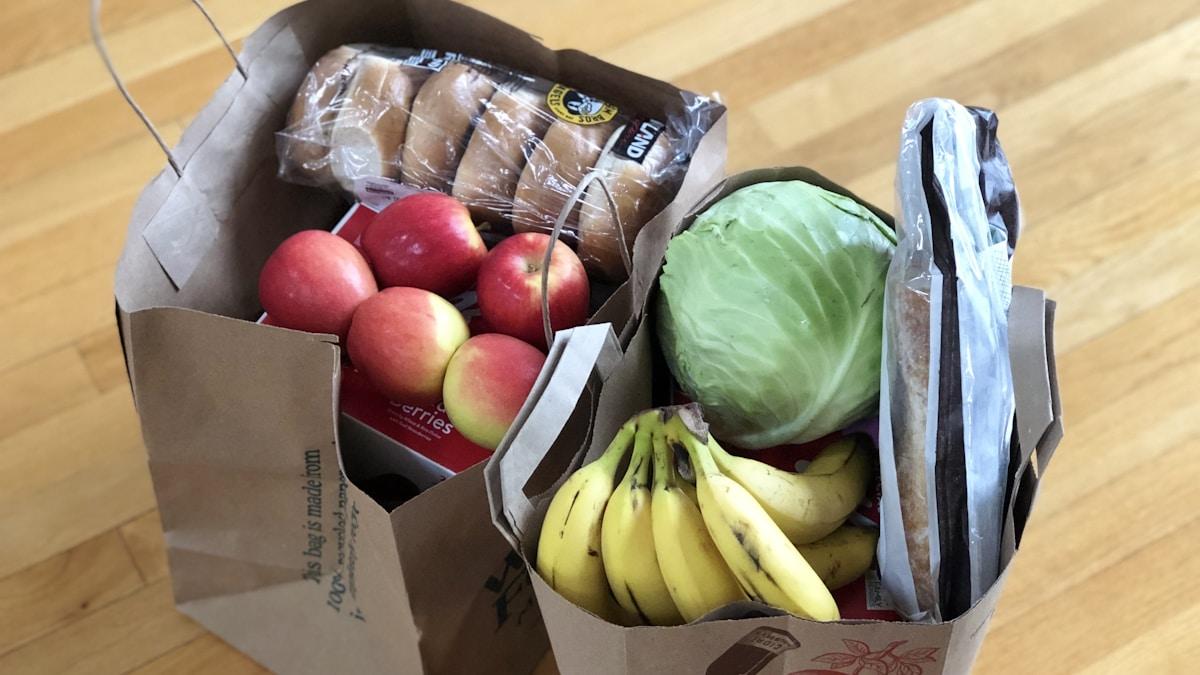
How to Read Nutrition Labels Like a Dietitian: Decode Food Packaging in 60 Seconds
Learn the dietitian-approved method to decode nutrition labels in under 60 seconds. Discover what to look for, what to avoid, and how to make smarter grocery choices.
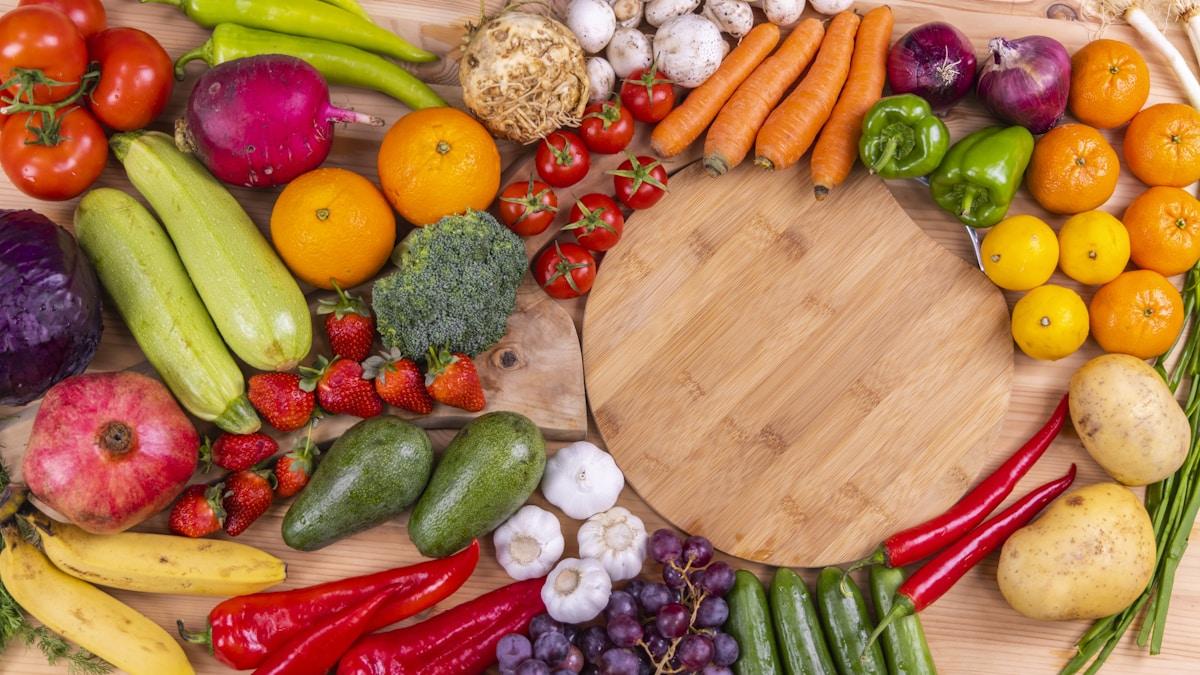
Understanding Micronutrients: The Essential Vitamins and Minerals Your Body Needs Daily
Complete guide to essential vitamins and minerals: what they do, how much you need, and the best food sources to meet your daily micronutrient requirements.
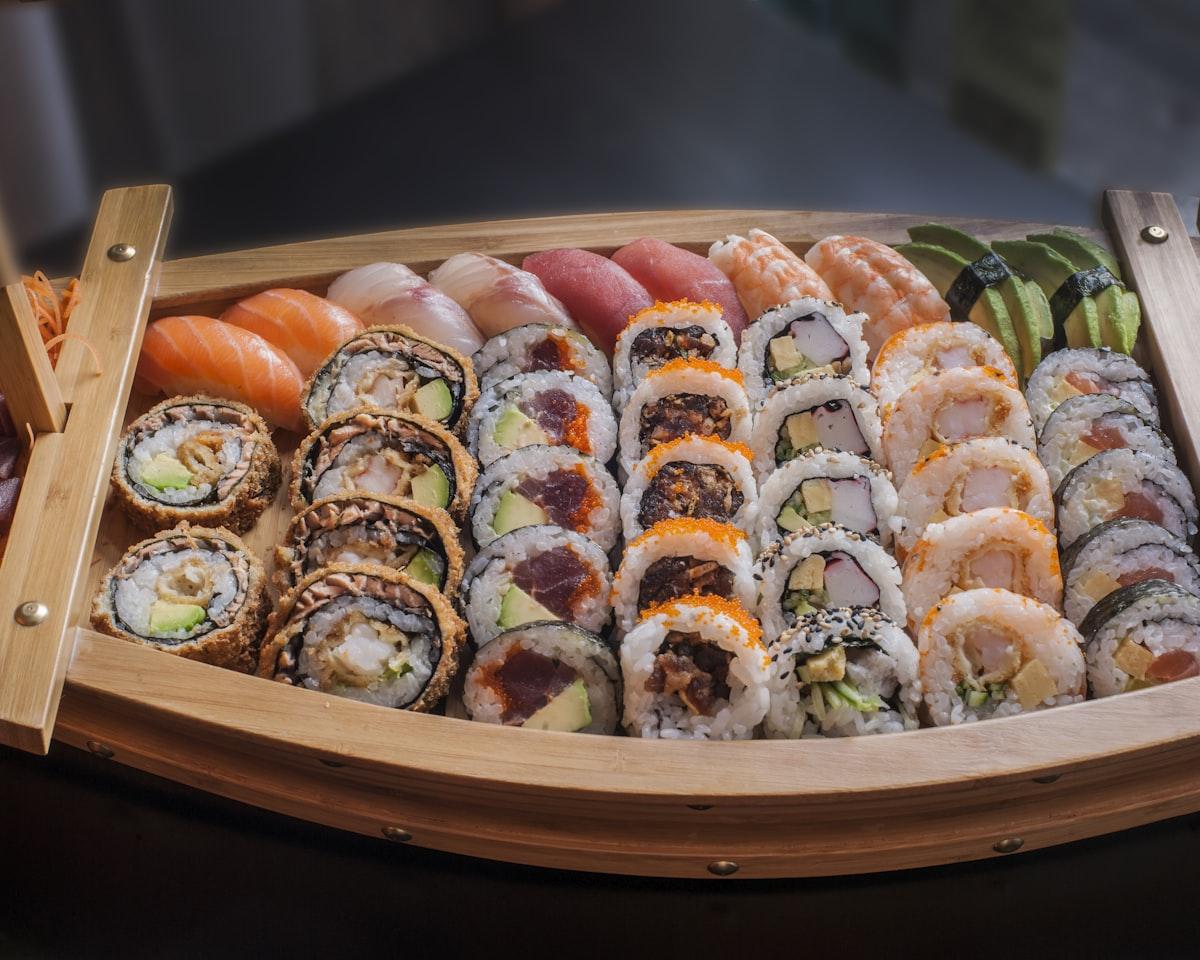
15+ High-Protein Foods for Active Lifestyles: Beyond Chicken and Eggs
Tired of chicken and eggs? Discover 15+ diverse high-protein foods for athletes and active individuals. Learn protein timing, meal ideas, and smart tracking strategies.